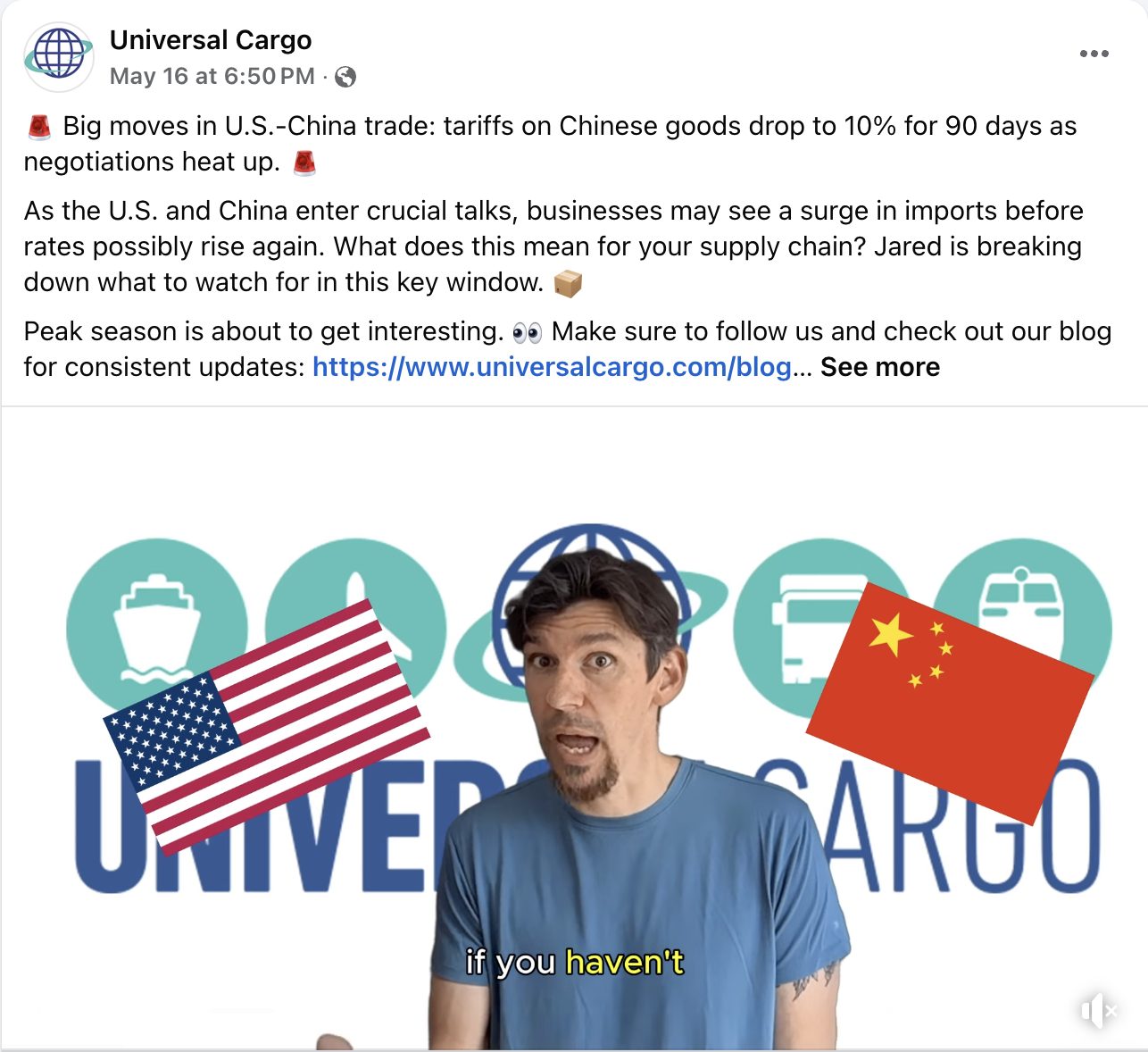Chinese Port Congestion Adding to Freight Rate Surge
In the wake of surging shipping demand from China to the U.S., Chinese ports are experiencing congestion. That should push transpacific freight rates, which are already climbing fast, to go even higher.
Freight Rate Pressure
Congestion at major shipping hubs, which delay cargo ships and strain capacity (supply), creates upward pressure on freight rates. Freight rates had been low – and for a while – with the trade war between the U.S. and China. Last week, however, freight rates shot up as demand surged after weekend negotiations between the Trump Administration and China resulted in slashed tariffs for a 90-day negotiation period.
We posted a video on our Facebook page talking about the fallout of the agreement between the Trump Administration and China’s President Xi Jinping’s representatives. The agreement essentially dropped America’s tariffs on Chinese goods from 145% to 30% and China’s tariffs on U.S. goods from 125% to 10% for the next few months.
The big takeaways on the fallout were carriers and freight forwarders reporting from 50% to 100% increases in bookings of shipments from China to the U.S. while news headlines were reporting a 277% increase in such bookings. By the end of the week, freight rates had already risen by about $1,000 per FEU (forty-foot equivalent unit) with carriers making transpacific freight rate filings of $6,000 for the beginning of June and $8,000 by the upcoming month’s halfway point.
Already, those figures are growing.
Today’s All-Ways’ notification email reported, “Peak Season Surcharges of $1,500–$2,500 per container are in effect. Broader rate hikes [are] likely by June 1.”
Yes, that brings up the point that the tariff slash is just in time for the international shipping peak season when demand on imports from China increases as retailers stock up for the back to school and holiday shopping seasons. The early importing many shippers did to beat the tariffs likely won’t diminish the peak season much. With some uncertainty about how the 90-day negotiation period will turn out, retailers may stock extra through this period in case tariffs shoot back up rather than a trade deal coming to fruition that keeps freight rates where they currently are.
Blanked Sailings and Congestion
We’re not looking at the skyrocketing and record-setting freight rates of the pandemic era when shipping demand surged after carriers had blanked (cancelled) hundreds of sailings in anticipation of a slump in demand. However, carriers have been blank sailing lately with demand lowered because of the trade war. The sudden surge in demand along with the Chinese port congestion (largely because the sudden increase in demand) right as we get to the peak season adds up to a great deal of upward pressure on freight rates.
And as I warned in a post at the beginning of the month answering international shipping questions, all the blanked sailings create equipment issues. Again, it’s nowhere near the level of what we saw with shipping container maldistribution during the pandemic, which helped create massive port congestion at that time, but there are some issues of container shortages in places now.
Keith Wallis reported in a Journal of Commerce (JOC) article about the Chinese port congestion and issues popping up with the sudden increase in shipping demand right now:
Forwarders expect congestion and container shortages to worsen in the next few weeks as carriers redeploy vessels to trans-Pacific services from Asia-Europe trades to meet the increased demand from shippers.
The port congestion in China, not helped by occasional bad weather, is taking out functional capacity at a time when it is needed most.
“Current delays at east and north China ports range from three to seven days depending on the carrier and trade lane,” a spokesperson for FIBS Logistics told the Journal of Commerce. “The situation remains fluid, and there are growing concerns congestion will worsen if more vessels are diverted from Europe to the US in June, as we’ve heard is the plan for some lines like HMM.”
Takeaway for Shippers
The bottom line for shippers who import from China right now is surging freight rates and potential for some delay on imports.
Ultimately, shippers will have to keep balancing out inverse price factors. Freight rates were quite low while tariffs were high. Now that tariffs have come way down, freight rates have shot up. Tariffs should remain stable the next few months. Freight rates, though volatile by nature, should be expected to be high and have a general upward trajectory over at least the next few weeks and probably for the next few months.




